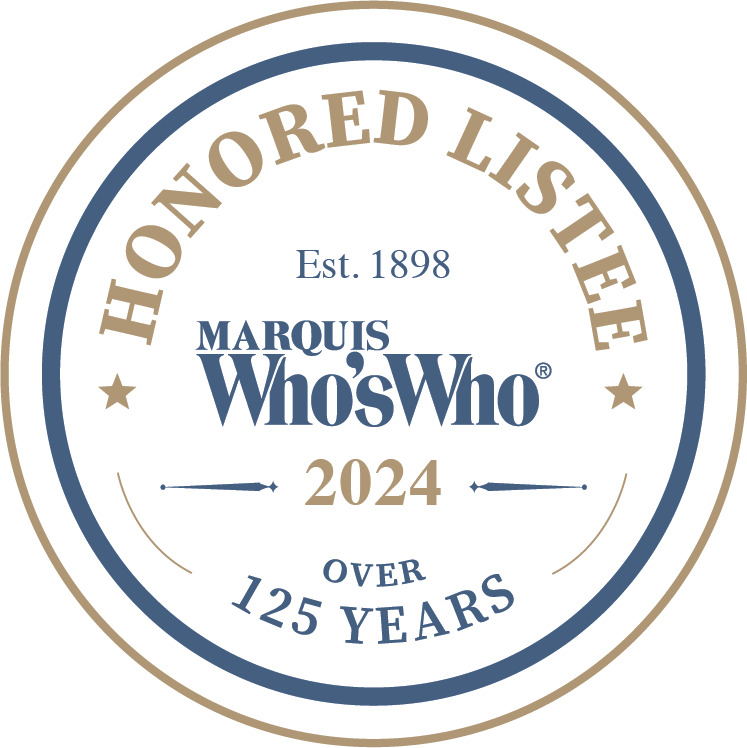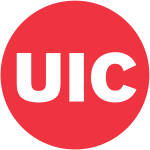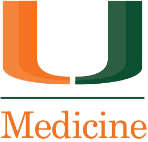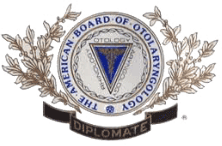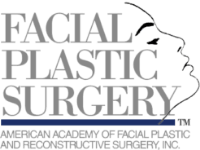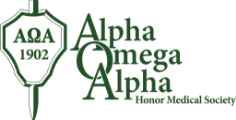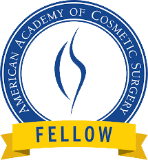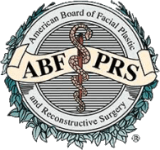Rhinoplasty
Ethnic rhinoplasty for female patient wanting to elevate her droopy tip and reduce the width of her nose including the nasal flare. Techniques included tip elevation graft, dorsal augmentation, and alar base reduction.
Results shown are 2 months post-op.
Ethnic rhinoplasty for female patient seeking refinements to her nose. She was bothered by her bridge on her profile view and the flare of her nostrils.
8-month post-op results
Primary rhinoplasty for patients seeking refinements to his nose. He was seeking to elevate the tip and reduce the width of the tip.
3 months post-op result.
Primary ethnic rhinoplasty for a female Hispanic patient who was bothered by the appearance of her slight bump on the profile and the droopy appearance of her tip. From the front she was bothered by the size of her tip and the flare of her nostrils. Primary rhinoplasty techniques included an ultrasonic rhinoplasty hump reduction, tip support and elevation, and flare reductions with nasal sill reductions.
Results shown are 2 months post-op.
Before and after primary rhinoplasty for a female patient who was mostly concerned about the profile appearance of her nose. She was bothered by the appearance of the hump and the droopy tip. Primary rhinoplasty techniques included ultrasonic rhinoplasty with hump reduction and caudal septal tip support graft.
2 Month post op result.
Ultrasonic rhinoplasty intraoperative results of a female patient with a dorsal hump and a droopy tip.
Male patient who desired to raise his droopy tip and narrow the appearance of the tip from the front while maintaining a natural appearance to the nose.
Patient felt she had a low bridge, wide tip, and nostril flare and sought refinements to these areas. Rhinoplasty techniques included bridge augmentation with diced cartilage, tip graft, and altar base reductions.
Female patient of Asian descent who desired more bridge and tip definition. Primary rhinoplasty techniques included dorsal augmentation, tip grafting, and alar base reductions.
Very complicated case of a patient with a severely crooked nose and twisted tip. Rhinoplasty techniques included the splinting of the septum using vomeric bone grafting. Re-positioning of the tip was performed as well as a hump reduction and caudal septal setback.
Female patient seeking to better define her bridge and reduce the width of her nose. Rhinoplasty techniques included bridge augmentation with ear cartilage, tip support with tip graft, and alar base reductions.
Dr. Bared describes his rhinoplasty techniques to correct a severe nose deformity from an early childhood accident in a 50 year old female
Dr. Bared discusses the results of a male patient seeking to reduce his hump and shorten his nose. Dr. Bared describes his techniques to give a natural outcome in the male patient.
Dr. Bared describes his techniques to refine the tip and narrow the bridge in a female Hispanic patient
Dr. Bared describes the techniques used to shorten the nose in a female patient with a long nose.
Dr. Bared describes his rhinoplasty techniques in a female patient with a hanging tip lobule
Dr. Bared explains his techniques for a Hispanic female patient who presented with a droopy tip because of a hidden columella
Dr. Bared reviews a complicated case of a female patient with a twisted nose deformity
Dr. Bared describes his technique for patient with a droopy tip and excess nostril show from the profile.
Female patient who presented with the primary concerns about the appearance of her profile. Rhinoplasty techniques included re-positioning the tip cartilages and a tongue-in-groove setback of the tip lobule plus hump reduction.
Dr. Bared presents a patient with a deviated nose not due to trauma and the techniques used to improve her deviation
Before and after primary rhinoplasty for a female patient who was bothered by the hump on her profile and the droopiness of her tip. She was especially bothered by the droopiness of the tip with smiling.
Dr. Bared describes the techniques used in a female patient who was bothered by her droopy tip when she smiled.
Dr. Bared describes his techniques for a male patient with a severely deviated septum and a droopy tip
Dr. Anthony Bared describes his techniques in rhinoplasty for profile alignment in a patient with a dorsal hump
Millennial female patient documents personal rhinoplasty journey in Miami, FL on TikTok. See the incredible results and quick recovery that she shares with her followers. Dr. Bared, a facial plastic surgeon in Miami, can help you by performing a rhinoplasty, also called a nose job. This procedure may be the answer to your problems with the appearance and function of your nose.
Dr. Bared describes his techniques for the raising of the bridge, alar base reduction, and tip refinement to provide for narrowing of the nose with natural appearing results.
Patient with a large dorsal hump and a droopy tip. Primary rhinoplasty techniques included hump reduction, bilateral spreader grafts, caudal septal extension graft and tip graft.
Dr. Anthony Bared, MD describes his techniques used a in patient for hump reduction and tip refinement
Dr. Bared describes his revision rhinoplasty techniques for a patient with multiple previous rhinoplasties with nasal tip deformities and breathing difficulty through the nose.
Dr. Bared Describes the different types of swelling after Rhinoplasty
Dr. Bared describes the initial recovery after a Rhinoplasty
Dr. Bared discusses the techniques used a in female patient who was seeking to reduce her nasal bridge hump and raise the tip of her nose.
Dr. Bared reviews a challenging case of a severe saddle nose deformity and the techniques utilized for the correction of the deformity
Dr. Bared reviews his techniques employed in a male rhinoplasty to address bridge and tip aesthetics
Dr. Anthony Bared shares his approach to rhinoplasty for a crooked nose, which is one of the hardest concerns to address.
Dr. Anthony Bared shares before-and-after photos and his approach to helping correct a nose so that it appears straight.
Dr. Bared describes his techniques in revision rhinoplasty for a patient with a pinched nasal tip from previous rhinoplasty
Female with a severely crooked nose who presents for primary rhinoplasty. On the profile she desired to reduce the bump and the projection of the tip. Primary rhinoplasty techniques included asymmetric osteotomies, spreader grafts, clocking sutures, vomeric bone septal splint, tip de-projection, lateral crural repositioning.
Hispanic female patient seeking to refine the appearance of her nose. She was bothered by the flare of her nostrils, the droopiness of her tip, and the bump on her profile. Primary rhinoplasty techniques included nostril flare reduction, tip support with caudal septal extension graft, tip graft, osteotomies, hump reduction, and soft tissue radix graft. Shown are her 1 year post-operative results.
Dr. Bared describes his techniques and reviews 1 year post-op results for a Hispanic female patient who was seeking to reduce her nostril flare, elevate her tip, and straighten the bridge of her nose.
Dr. Bared describes his techniques for a primary rhinoplasty for a female patient to reduce the hump and aesthetically improve the profile to give very natural results.
Female African American patient who desired to reduce the width and refine her bridge, reduce the width of the flare of the base of the nose, and refine the tip of her nose.
Rhinoplasty techniques included tip support with caudal septal extensions graft, tip graft, alar base reductions, and dorsal refinement and elevation with diced auricular cartilage.
Patient who had undergone two previous rhinoplasties with a severely crooked S-shaped nose. On her profile she has a low, collapsed bridge with a saddle nose deformity. Dr. Bared describes his techniques for rib cartilage grafting in this challenging revision surgery.
African American patient who sent in her photos 1 year post-op after primary rhinoplasty. Primary rhinoplasty techniques included the refinement of the tip and bridge. Alar base reductions were performed to narrow her nasal base and reduce her nostril flare.
Dr. Bared reviews rhinoplasty cases for patients of different ethnicities who presented with a variety of concerns, and then answers questions from a virtual audience, during this webinar.
Dr. Bared discusses his techniques used in a patient with a crooked nose, hump, and over-projected tip.
Dr. Anthony Bared, rhinoplasty specialist in Miami, FL, shares his approach to rhinoplasty and how he achieves natural-looking results.
Dr. Anthony Bared, rhinoplasty specialize in Miamim FL, shares his approach to ethnic rhinoplasty and how he achieves the desired end look for his patients.
Dr. Bared discusses his techniques employed in a challenging case involving a patient with a severely twisted tip. The deformity of the tip in this case was due to severely asymmetric tip cartilages and a deviation of the nose.
Dr. Bared describes his techniques to help straighten a crooked nose. It is well known that the straightening of a crooked nose is the most challenging aspect of rhinoplasty. Dr. Bared describes his multi-tiered techniques employed in a patient with a crooked nose.
Dr. Bared analyzes the results of a patient who was seeking refinements to her tip. While the changes in her case were subtle to the profile of the nose, nice aesthetic differences can be noted in the tip and the appearance of the bridge.
Female patient who desired to refine her tip and her bridge. She was bothered by the size and the shape of her tip. Challenging case of what is called a “trapezoidal tip deformity.” Primary rhinoplasty techniques entailed the flattening and re-positioning of the tip cartilages to narrow the tip and provide for the most natural results.
Dr. Bared describes his rhinoplasty techniques for a complicated case of a patient with a boxy and ultra wide tip shape to provide for the most refinements and natural results.
Female patient who was bothered by the long appearance of her nose. She desired to shorten the nose from the profile and the frontal view. Primary rhinoplasty techniques included a tongue-and-groove tip securing technique onto the existing septum to help shorten the nose and stabilize the tip from drooping.
Dr. Bared shares his approach to the complicated deformity of crooked noses.
Dr. Bared describes his techniques for the refinements in a patient with a very low nasal bridge using her own, natural cartilage and avoiding the use of an artificial implant in the nose.
Challenging case of a female, Hispanic patient with thick nasal skin and very low nasal bridge. In order to create more refinements to her nose, dorsal augmentation was performed using ear cartilage graft to avoid the use of an artificial nasal implant. Tip graft was utilized to support and refine the nasal tip. To create narrowing to the front of the nose in patients with thick skin, projection needs to be undertaken on the profile of the nose.
Dr. Bared reviews a complicated case of a patient with poor and weak cartilage support of the nose who developed what is known as a saddle nose deformity. Given the lack of cartilage in the septum, cartilage from the rib was utilized to rebuild the support of the nose to optimize her aesthetic results.
Dr. Bared discusses his techniques used in a patient seeking refinement to her nasal tip and profile.
Dr. Bared describes his rhinoplasty techniques for a patient with a long tip giving her profile a droopy appearance. In this case, the tip cartilages were narrowed in both the horizontal and vertical dimensions to provide for the most refinement and natural results.
Dr. Bared describes his techniques to achieve the most natural results for a patient with a very droopy and bulbous tip.
Patient who desired improving the aesthetic appearance of her nasal tip She felt her tip was too wide and bulbous. She also desired to raise the tip so as not to appear droopy from the profile view. Primary rhinoplasty techniques included the repositioning of the tip cartilages, the elevation and support of the tip with a caudal septal extension graft, and further tip refinement with an onlay graft.
This male patient has what is known as a tension nose deformity. In this case, the patient was seeking to reduce the over-projection of the bridge of the nose and to raise the droopiness of the tip. You will note he also had difficulty breathing through the nose as is evident from his mouth opening and mouth-breathing seen in the pre-operative photos and his closing of the mouth given his improvement in breathing through the nose after surgery in the post-operative photos.
Dr. Bared discusses his techniques for the male patient with what is known as a tension nose deformity. In this case, the patient was seeking to reduce the over-projection of the bridge of the nose and to raise the droopiness of the tip. You will note he also had difficulty breathing through the nose as is evident from his mouth opening and mouth-breathing in the pre-operative photos and his closing of the mouth given his improvement in breathing through the nose after surgery.
Dr. Anthony Bared, MD, FACS presents a patient with a deviated nose where an advanced technique was utilized called an extracorporeal septoplasty. In this technique the entire septum is removed and reconstructed to help provide for the best improvement in the deviation of the nose. The patient is seen in the video three months after surgery.
Before and 3 months after primary rhinoplasty to help correct a deviated nose. This patient presents with the very challenging finding of a deviated nose where the entire lower two-thirds of the nose is deviated to the right side. Rhinoplasty techniques included an extracorporeal septoplasty which is a very advanced septoplasty technique where the entire septum is removed and reconstructed then replaced. A hump reduction and slight tip elevation was also performed to improve the aesthetics of the profile as were the patient’s goals.
Dr. Bared describes his revision rhinoplasty techniques employed to help a patient with concerns after a rhinoplasty. Measures were utilized to soften an overly pointy nasal tip and reduce the projection of the nasal tip. See more of Dr. Bared at www.DrAnthonyBared.com and www.facialplasticsurgerymiami.com
Dr. Bared describes his techniques in a female patient with a hump and a very low radix to provide for the most natural appearing profile after surgery and prevent an operated appearance.
Dr. Bared describes the expected swelling and the importance of follow up visits after rhinoplasty particularly in patients with thicker nasal skin. In this video he shows how the swelling changes from 1 month after surgery to 6 months after surgery.
Female patient seeking refinement to her nose. She was most bothered by the appearance of the profile of her nose. Primary rhinoplasty techniques utilized included bilateral osteotomies, hump reduction, soft tissue radix augmentation, caudal septal extension graft, tip de-fatting, and tip onlay graft.
Dr. Bared describes his techniques on a male patient with what is known as a tension nose deformity which includes an over-protected bridge and tip with an obtuse nasolabial angle.
Female patient seeking refinements to her nose. She desired to improve the droopy appearance of her tip from the profile view and refine the bridge and base of the nose. Before and after photos show the support provided to the tip and the refinements to the bridge and the base of the nose. Rhinoplasty techniques included bilateral osteotomies, nasal tip skin de-fatting, alar base reductions, and tip support with caudal septal extension graft and onlay grafts.
Dr. Anthony Bared, MD, FACS presents his techniques for a female Hispanic patient looking to straighten her nose, refine her tip, and reduce the hump of her profile.
Female, Hispanic patient who desired to refine her nose by straightening the nose, refining the tip, and reducing the hump on the profile view. Primary rhinoplasty techniques included bilateral osteotomies, tip nasal skin de-fatting techniques, bilateral spreader grafts, septoplasty, caudal septal extension graft, and tip onlay graft.
Patient who desired refinements to her profile and the shape of her tip. Primary rhinoplasty techniques included hump reduction, bilateral osteotomies, bilateral spreader grafts, caudal septal extension graft for tip support, lateral crural repositioning with lateral crural strut grafts, and tip onlay graft. She has vertically oriented tip cartilages thus to give the most natural tip refinement appearance, the tip cartilages were repositioned. 9 month long term follow photos are provided.
Female patient who wanted to refine her tip. She was displeased with the bulbous shape of the tip from the front and the profile of the tip and the bridge. Primary rhinoplasty techniques included bilateral osteotomies to narrow bridge. Tip refinement techniques included the repositioning of the lower lateral cartilages with lateral crural strut grafts and tip support with a caudal septal extension graft. These tip refinement techniques were employed to give a natural appearance to the outcome.
Facial Plastic Surgeon, Dr. Anthony Bared, MD, FACS, describes his approach as it specifically pertains to the male rhinoplasty patient seeking to lower the bridge and reduce the size of their nose from the perspective of the profile.
Dr. Anthony Bared describes a complicated revision rhinoplasty of a patient with a severely crooked nose from previous surgery and trauma to the nose.
Revision rhinoplasty for a patient who had undergone a previous rhinoplasty and desired to raise and narrow her bridge as well as create refinements to the nose. Revision rhinoplasty techniques included the raising of the bridge and the narrowing of the bridge with diced ear cartilage and temporalis fascia graft to avoid the placement of an implant in the nose. Tip support was created with a caudal septal extension graft and tip graft.
Dr. Anthony Bared discusses a challenging rhinoplasty with the goals of refining the tip and straightening the profile. Tip cartilages were re-positioned in order to achieve natural, refined tip aesthetics
The most challenging aspect of this primary rhinoplasty is not the reduction of the hump on the profile but rather the attainment of tip refinement while providing for a natural tip aesthetic outcome. In this case primary rhinoplasty techniques included open approach, hump reduction, osteotomies, bilateral spreader grafts, caudal septal extension graft for tip support, tip cartilage repositioning with lateral crural strut grafts, and tip onlay graft.
Female patient who desired refinements to her nose. She desired to have a more elevated bridge, a narrowed tip and narrowing of the nasal base. Primary rhinoplasty techniques included bridge augmentation with diced auricular cartilage and temporalis fascia, tip onlay graft and alar base reductions.
Challenging case of a female patient with a severely crooked nose. Primary rhinoplasty techniques included an open rhinoplasty approach, right-sided osteotomy, bilateral spreader grafts, clocking suture, footplate suture, temporalis fascia onlay grafts, caudal septal extension graft, and tip onlay graft.
Dr. Bared describes a complicated rhinoplasty for a traumatic saddle nose deformity. In this case, the part of the nose that is composed of cartilage had dis-articulated from the bone resulting in what is called a saddle nose deformity. Rib cartilage was used to rebuild the middle vault of the nose and counter-rotate the nose.
Challenging case of a female patient with very thick nasal skin who desired refinements to the nose. Her rhinoplasty techniques included an open approach, nasal skin de-fatting, radix graft, bilateral osteotomies, caudal septal extension graft for tip support, tip onlay grafts, and alar base reductions.
Facial plastic surgeon, Dr. Anthony Bared, MD, FACS, describes his techniques for a female Hispanic patient who desired to decrease the projection of her tip and bridge from the profile while preserving very natural appearing results from the frontal view of the nose.
Female patient who desired to reduce the appearance of the hump on the profile view of the nose. Primary rhinoplasty techniques included an open approach, bilateral osteotomies, hump reduction, bilateral spreader grafts, caudal septal extension graft, and tip onlay graft. She is seen here 4 months after surgery.
Patient whose concerns include the over-projection of her tip and bridge on the profile view as well as the bulbous tip appearance on the front view. Primary rhinoplasty techniques included bilateral osteotomies, bilateral spreader grafts, caudal septal extension graft, tip onlay graft, and batten graft.
Facial Plastic Surgeon, Dr. Anthony Bared, MD, FACS, describes his techniques for a patient with a droopy tip, dorsal hump and thick skin.
Asian female patient who desired to have refinements to her tip and bridge. The bridge was refined by narrowing and raising the bridge of her nose. Bridge refinement was achieved with osteotomies and augmentation using temporalis fascia and diced cartilage grafting. The tip was narrowed and refined using a tip graft.
Female patient whose cosmetic concerns included tip refinement, tip elevation, and the hump on her profile view. She underwent a primary rhinoplasty with a hump reduction, osteotomies, and caudal septal extension graft for tip support.
18 year old male who desired to reduce the size of his nose. He also complained of not breathing well from one side of his nose. He was found to have a deviated nose and a deviated septum. These were corrected with a septoplasty and an open approach to rhinoplasty. The pictures provided are 1 month after surgery.
A 18 year old male with distant history of nasal trauma. Presents complaining of bilateral nasal obstruction and crooked nasal deformity. He was found to have a severely deviated septum and an external nasal deviation. Challenging primary rhinoplasty which included septoplasty, hump reduction, spreader grafts, and batten grafts. Post-operatively his nasal obstruction was corrected. On the frontal view, an improvement in his nasal deviation is evident. Lateral view shows reduction of his hump with profile alignment. Base view reveals a triangular shape, nostril symmetry as well as improvement of his nasal deviation.
Challenging primary rhinoplasty female patient who presented with nasal blockage and cosmetic complaints regarding her nose. She found her nose to be large and with a crooked appearance. She was found to have a significantly deviated septum and an external deviation of her nose to the right side. Complicated primary rhinoplasty which included a septoplasty, placement of spreader grafts, removal of nasal hump, tip setback through a tongue and groove technique, and tip domal suturing. Postoperatively, patient now without nasal breathing problems, nose straight externally, profile alignment with straight dorsum, and natural tip refinements on frontal view. Base view demonstrates the tip refinements achieved while maintaining nostril symmetry.
Female who desired nasal refinements to her bridge and tip. Her goals were narrowing of the bridge on the frontal view and refinement to the tip on the frontal view. On her profile she desired to reduce the hump and the droopy tip. Open rhinoplasty techniques included osteotomies, bilateral spreader grafts, hump reduction, caudal septal extension graft, and tip onlay grafts.
Patient with a undefined and boxy tip seeking refinement to her tip and the straightening of her profile. In this case the tip was refined with onlay tip grafts using crushed cartilage and the root of the nose (the radix) was raised using cartilage grafting which gave the profile a straighter appearance and alignment with the tip.
Before and after primary rhinoplasty on a female patient with the primary complaint of the over-projection of her bridge. Primary rhinoplasty techniques included hump reduction, osteotomies, bilateral spreader grafts, and caudal septal extension graft for tip support.
Patient who desired an overall thinner nose from the front and tip elevation on the profile view. Challenging case with very wide nasal bones and tip cartilages with thick nasal skin. Primary open rhinoplasty techniques included both medial and lateral osteotomies for maximal nasal bone narrowing. The tip cartilages were repositioned with placement of lateral crural strut grafts and tip onlay grafts. The tip cartilages were re-oriented to provide for narrowing of the tip while preserving a natural tip appearance given the orginal ultra wide tip cartilage orientation. Base view of the nose shows the boxy tip cartilage prior to surgery. Tip support with caudal septal extension graft. She is seen 6 months post-op.
Patient with concerns of wide tip and hump on the profile view. Open rhinoplasty techniques include hump reduction, osteotomies, bilateral spreader grafts, caudal septal extension graft and tip onlay grafts. Seen here are her 8 month post-operative results.

